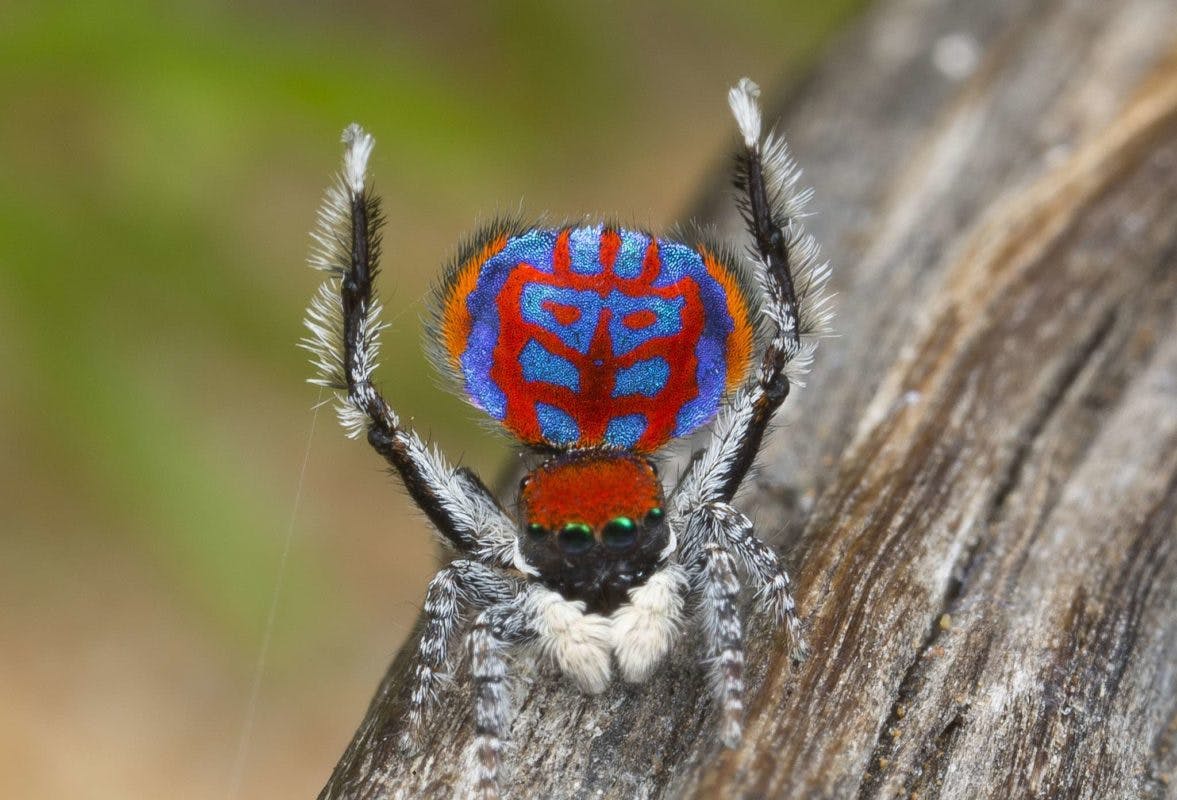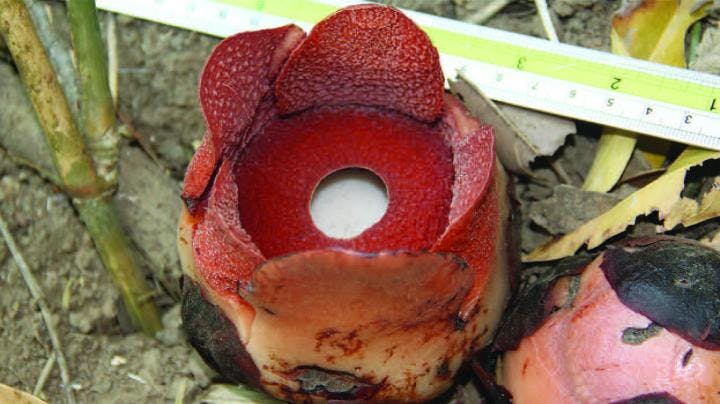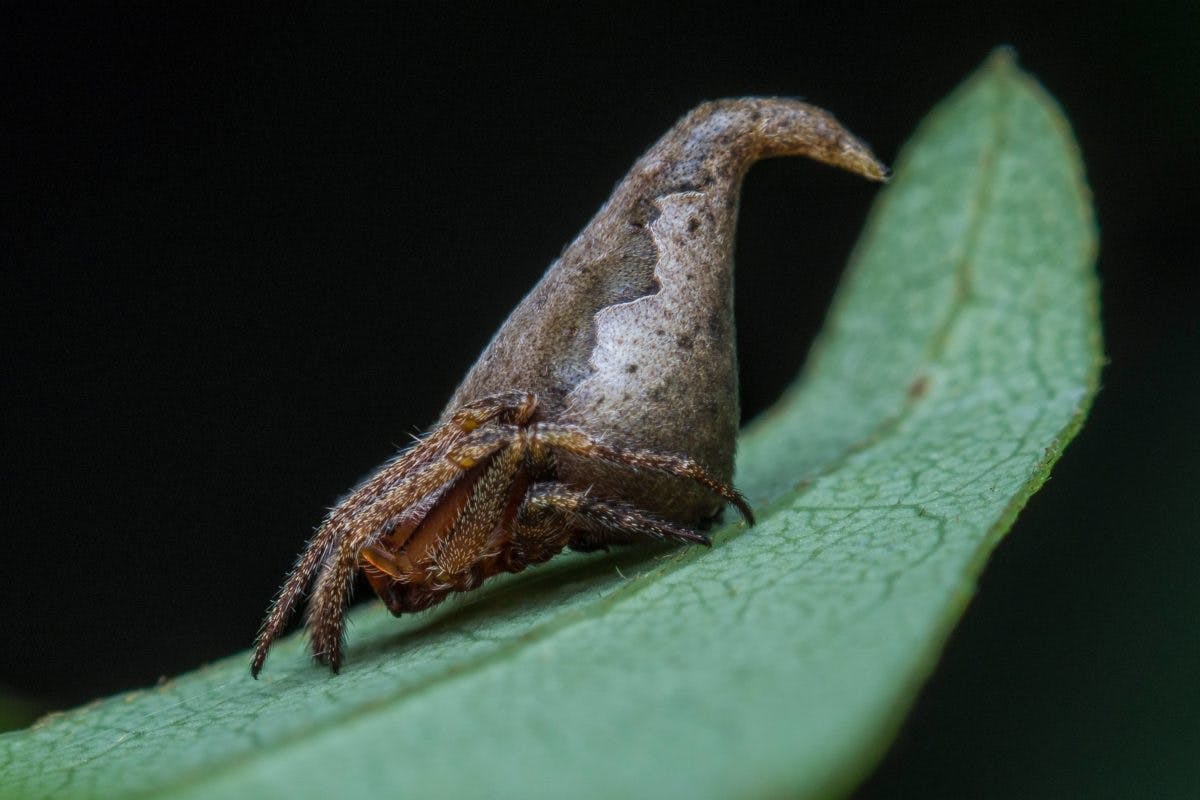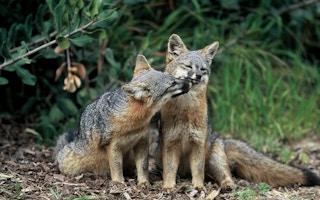As always, Mongabay covered a mix of environmental stories this year. While some species went extinct, several new species were discovered. Some forests were wiped out, but others were restored. Below, we take a look at some of the “happier” stories of 2016 (in no particular order) — from the declaration of large marine parks to animals that are recovering after years of decline, a reserve for the world’s largest primate, and increased restrictions on wildlife trade.
1. Animals are bouncing back from extinction
For some animals, 2016 was a good year. Take California’s Island foxes for example. In August, the U.S. Fish and Wildlife Service announced a proposal to remove three subspecies of the island fox — found on San Miguel, Santa Rosa and Santa Cruz Islands — from the Federal List of Threatened and Endangered Wildlife.
According to the U.S. FWS, this was the fastest mammal recovery in Endangered Species Act history, thanks to an aggressive recovery plan.
Another species in California, the Sierra Nevada yellow-legged frog, showed rapid signs of recovery. Once close to extinction, frog numbers seem to have increased seven-fold over the last 20 years, a recent study found.
Effective conservation efforts also resulted in improved conservation status of species like the Giant Panda, Tibetan Antelope, the Bridled Nailtail Wallaby, and the Greater Stick-nest rat this year.
The Giant Panda, for example, was down-listed from Endangered to Vulnerable in the IUCN Red List, while the Tibetan Antelope was moved from Endangered to Near Threatened.
Saiga antelopes in Kazakhstan, too, seem to be recovering from the catastrophe last year that killed about 200,000 of these critically endangered animals in Betpak-Dala. A recent aerial survey of saigas has revealed that the numbers of all three saiga populations in Kazakhstan — Ural, Betpak-Dala and Ustyurt — are going up.
2. The year of marine parks
In 2016, the world became serious about protecting oceans by establishing some of the largest marine protected areas ever.
Malaysia, for example, established its largest marine park — the Tun Mustapha Park — off Sabah Province in Borneo, after 13 years of negotiations. At nearly 1 million hectares, the Tun Mustapha Park includes more than 50 islands and islets spread across Kudat, Pitas and Kota Marudu districts.
In September, U.S. President Obama announced the creation of the Northeast Canyons and Seamounts Marine National Monument, the first of its kind in the Atlantic Ocean. Located 130 miles off the coast of New England in northeastern U.S., the marine park is slated to protect 4,913 square miles of the ocean. A month prior to this, Obama had announced the expansion of Papahānaumokuākea Marine National Monument by 442,781 square miles, creating the largest marine reserve off Hawaii.
In a rare step forward, 24 countries and the European Union unanimously agreed to create the world’s largest marine protected area off Antarctica. The new reserve is expected to come into force in December 2017 and will set out to protect some 1.55 million square kilometers (~600,000 square miles) of the Ross Sea around Antarctica.
Mexico, too, announced the creation of its largest marine reserve ever — the Mexican Caribbean Biosphere Reserve, estimated to cover more than 5.7 million hectares.
3. World’s tallest tree was discovered

This year, a few records were broken. First, researchers announced in June that they had discovered the world’s tallest tree in the tropics — a yellow meranti (Shorea faguetiana) in Sabah, a state in Malaysian Borneo. The giant tree, measuring 89.5 meters (293.6 feet), is 1.2 meters (4 feet) taller than the previous record holder, another yellow meranti from Sabah’s Tawau Hills National Park.
Then, a few months later, Gregory Asner of the Carnegie Institution for Science at Stanford University announced that he had not only found one taller tropical tree, but 50 trees that were taller than the yellow meranti. The tallest tree now, a tree in the genus Shorea, towers at 94.1-meters (nearly 309-foot), and has a canopy that measures 40.3 meters (132 feet) in diameter. Asner discovered the trees in Sabah’s relatively undisturbed Danum Valley.
“I tried to find an analogy for how tall this tree is, and I found that the largest toothed whale, the sperm whale, averages 16 meteres in length,” Asner told Mongabay. “So this tree is six times that size!”
The discovery of so many tall trees in Danum Valley underscores the importance of retaining the last remaining areas of pristine lowland forest, Glen Reynolds, the director of the Southeast Asia Rainforest Research Partnership, told Mongabay.
“Trees of this size and age simply don’t exist outside of primary forest — so it’s crucial that the forests which support these now-rare giants is protected,” he said.
4. Countries moved towards ending ivory trade
At the International Union for Conservation of Nature (IUCN) World Conservation Congress in Hawaii this year, delegates passed a motion to ban all domestic ivory markets. The ban is not legally binding, but shows that countries are stepping up towards combatting illegall ivory trade.
This is “the first time that a major international body has called on every country in the world to close its legal markets for elephant ivory,” Andrew Wetzler, deputy chief program officer at the Natural Resources Defense Council, said.
“It’s truly a landmark moment, and a victory for elephants that will hopefully be repeated later this month at the next meeting of CITES in Johannesburg.”
The U.S. acted on its pledge to end commercial ivory sales by announcing a “near-total ban” on the commercial trade of elephant ivory.
Previously, ivory could be traded if it had been imported prior to 1978. But the finalized rule — a revision of the Endangered Species Act — closes this loophole and limits the legal trade in elephant ivory only to antiques that are over a century old, as well as certain pre-existing manufactured products that contain less than 200 grams of ivory.
Hong Kong, too, announced that its three-step plan to phase out domestic ivory trade by the end of 2021 has been approved by the Chief Executive in Council.
As part of the plan, all ivory trading licenses will expire on December 31, 2021, giving domestic ivory traders five years to liquidate their stocks.
5. Restrictions on wildlife trade increased
Illegal trade has wreaked havoc on wildlife populations. But this year, governments voted to increase trade restrictions for several species at the 17th meeting of the Conference of the Parties (CoP17) to CITES in Johannesburg, South Africa.
Governments voted to include all rosewood species belonging to Dalbergia genus under CITES protection, launching a clampdown on the illegal trade of rosewood used for making luxury furniture in China. Rosewood is the world’s most trafficked product, and its illegal trade is wiping out forests, and has been linked to violence and organised crime.
Countries also voted to ban all international commercial trade in wild-caught African grey parrots by including the species in the Appendix I of CITES, which represents the highest level of protection available under international law. Captive-bred birds will be allowed to be traded, but only from breeding facilities that are registered with CITES.
All eight species of pangolin, too, will be listed under CITES Appendix I, after several years of being protected under Appendix II.
Pangolins, found in Asia and Africa, are thought to be the world’s most trafficked mammal, captured mainly for their scales that are ground into powder and used to treat various illnesses despite there being no scientific evidence to back their curative properties.
World governments also voted to up-list the Barbary macaque — Europe’s only native, non-human primate — to CITES Appendix I. These animals occur in fragmented forest patches of Algeria and Morocco in North Africa, and on the Rock of Gibraltar in Europe.
The monkeys are popular in the European exotic pet trade, and their inclusion in Appendix I could help protect them from poaching and illegal trade, conservationists say.
6. Community conservation efforts are paying off
For wildlife and forests to survive, local community support is often key. This year, we published numerous stories about how community efforts are paving the way for successful protection of forests and non-charismatic species.
Take for example this story about how Purnima Devi Barman and Arvind Mishra transformed some Indian community’s disgust for the rare and “ugly” Greater Adjutant storks into a strong desire to protect them.
Indigenous groups have also been buying land and using traditional conservation and cultural practices to manage forests around them. The Wiwa community in Colombia, for instance, has been buying land around the Sierra Nevada de Santa Marta Natural National Park, aided by The Nature Conservancy, and slowly restoring them.
In another part of the world, a Dayak Ngaju man named Januminro has been purchasing and reforesting degraded land not far from Palangkaraya, the capital of Indonesia’s Central Kalimantan province. Today the forest he has helped restore spans 18 hectares and is home to orangutans, sun bears and other endangered species.
Communities in Guatemala and Myanmar, too, have been working with local organisations to protect and restore forests around them.
7. Reserve with rare gorilla was finally protected
The world’s largest primate — the Grauer’s gorilla — had a reason to cheer this year. Democratic Republic of Congo’s (DRC’s) provincial governor of South Kivu formally approved the boundaries of the Itombwe Reserve in eastern Democratic Republic of Congo, one of the last strongholds of these gorillas.
The region is also home to more than 750 species of terrestrial vertebrates and over 1,000 plants, including at least 53 globally threatened species.
This formal agreement is good news because Grauer’s numbers have fallen from an estimated 17,000 individuals in 1995 to less than 4,000 today, due to prolonged civil unrest, illegal hunting and habitat destruction due to mining.
The agreement, signed with representatives of the local communities and NGOs witnessing the signing event, was a “historic moment that marks a new era for this reserve”, national director of WWF-DRC, Jean-Claude Muhindo, said in a statement.
8. Indonesian government’s commitments to protect and restore peatlands
Last year, devastating fires swept across Indonesia and neighboring countries, thanks to decades of slash-and-burn clearing of forests and peatlands, mostly by palm oil and timber companies.
According to the World Bank, the fires cost Indonesia more than $16 billion. This year, the Indonesian government took some steps towards restoring and protecting the country’s peatlands.
Indonesia’s peatland restorative agency, for example, called for all peat domes in the country to be designated as protected areas. The agency already released an indicative peatland map covering 2.5 million hectares to guide its restoration efforts. Chief of the agency, Nazir Foead, signed a decree on September 14 detailing the target restoration across seven provinces.
The Indonesian police arrested hundreds of people in connection with burning land this year, and an Indonesian appeals court declared pulp and paper supplier PT Bumi Mekar Hijau guilty of causing fires in South Sumatra, ordering the company to pay $6 million in compensation.
In April this year, Indonesian President Joko “Jokowi” Widodo also announced a freeze on new permits for oil palm cultivation and mining. Following this announcement, the Indonesian forestry ministry rejected all outstanding requests to establish plantations in the forest zone. Sixty-one palm oil companies have had their proposals rejected.
9. Obama banned oil drilling in most of the Arctic and Atlantic Oceans
This month, U.S. President Obama in partnership with Canada, banned oil drilling from large parts of the Arctic and Atlantic Oceans indefinitely. Using the Outer Continental Shelf Lands Act, Obama blocked drilling in large portions of the Chuckchi and Beaufort seas in the Arctic, home to several endangered species, including the bowhead whale, fin whale, Pacific walrus and polar bear.
He also banned drilling off the shores of the Atlantic Ocean consisting of coral-rich canyons stretching from Massachusetts to Virginia. Canada announced a similar ban in the Canadian Arctic, which it plans to revisit every five years.
In a statement, the White House said that these actions “reflect the scientific assessment that, even with the high safety standards that both our countries have put in place, the risks of an oil spill in this region are significant and our ability to clean up from a spill in the region’s harsh conditions is limited.”
10. See: The top 20 new species of 2016
At a time when species are disappearing at an accelerated pace, the discovery of new species always brings cheer. You should see the photos of the top 20 new species of 2016. Here’s a sneak peek.

Scientists described more than 10 new dancing peacock spiders this year. Image: Jürgen C. Otto via Mongabay.com

Scientists discovered the smallest of the giant flowers Rafflesia. Photo by Edwino S. Fernando, CC-BY 4.0 via Mongabay.com

Eriovixia gryffindor, a new species of spider was discovered in Karnataka. India. Photo credit: Sumukha J. N. via Mongabay.com
This story was published with permission from Mongabay.com.










